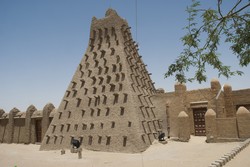African architecture emerges from the shadows
African architecture has been around for centuries, but it is only in the past few decades that it has gained ground. The sub-Saharan style of architecture slowly but surely proved its uniqueness in the face of Eurocentrism and architectural discrimination by some western schools of thought, seen in particular prior to World War II (WWII). The EU-funded AFROBRIDGE(opens in new window) (The African connection and post-war design principles in architecture: The intellectual bridge to Europe and the USA) project examined the western vs. non-western dynamic regarding architectural exchanges among Europe, North America and Africa. It looked at how architecture in sub-Saharan Africa influenced post-war modernism in Europe and North America, considering movement and exchanges among people and ideas. To achieve its aims, the project team outlined how the exchanges took place, identifying the relevant architects and design cases involved. It also defined sub-Saharan design principles and touched on the subject of sustainability, looking as well at the impact that the project's work could have in current times. AFROBRIDGE gathered many books and publications from the 1940s and 1950s on the topic. It delved into the Athens Charter, prepared after WWII by the world-class architect Le Corbusier and the Congrès International d'Architecture Moderne (CIAM) to address post-war reconstruction. Both the publications and the Charter had encouraged the dissemination of the African topic within the fields of architecture and design. This was followed by observations on how members of Team Ten, a group of 10 architects who in the 1950s superseded CIAM, interpreted traditional African architecture. Another important part of the project focused on the period between the 1950s and 1960s. It identified the work of lesser-known African architects who, unlike their western-influenced peers, did not have a Eurocentric vision for building Africa, but integrated local elements in their design. Lastly, an effort was made to highlight how in the 1970s certain western architects promoted the study of traditional African architecture and how this linked with development of the green movement in architecture. The project's revealing results were disseminated through journal publications, international projects and online. They represent the only in-depth study on African influence in European and North American post-war architecture, redefining the role of sub-Saharan design traditions in the modern world. The study illuminates the debate on influences of colonisation and post-colonisation on architecture, offering valuable insight for today's architects and giving Africa its rightful place in global architecture.



